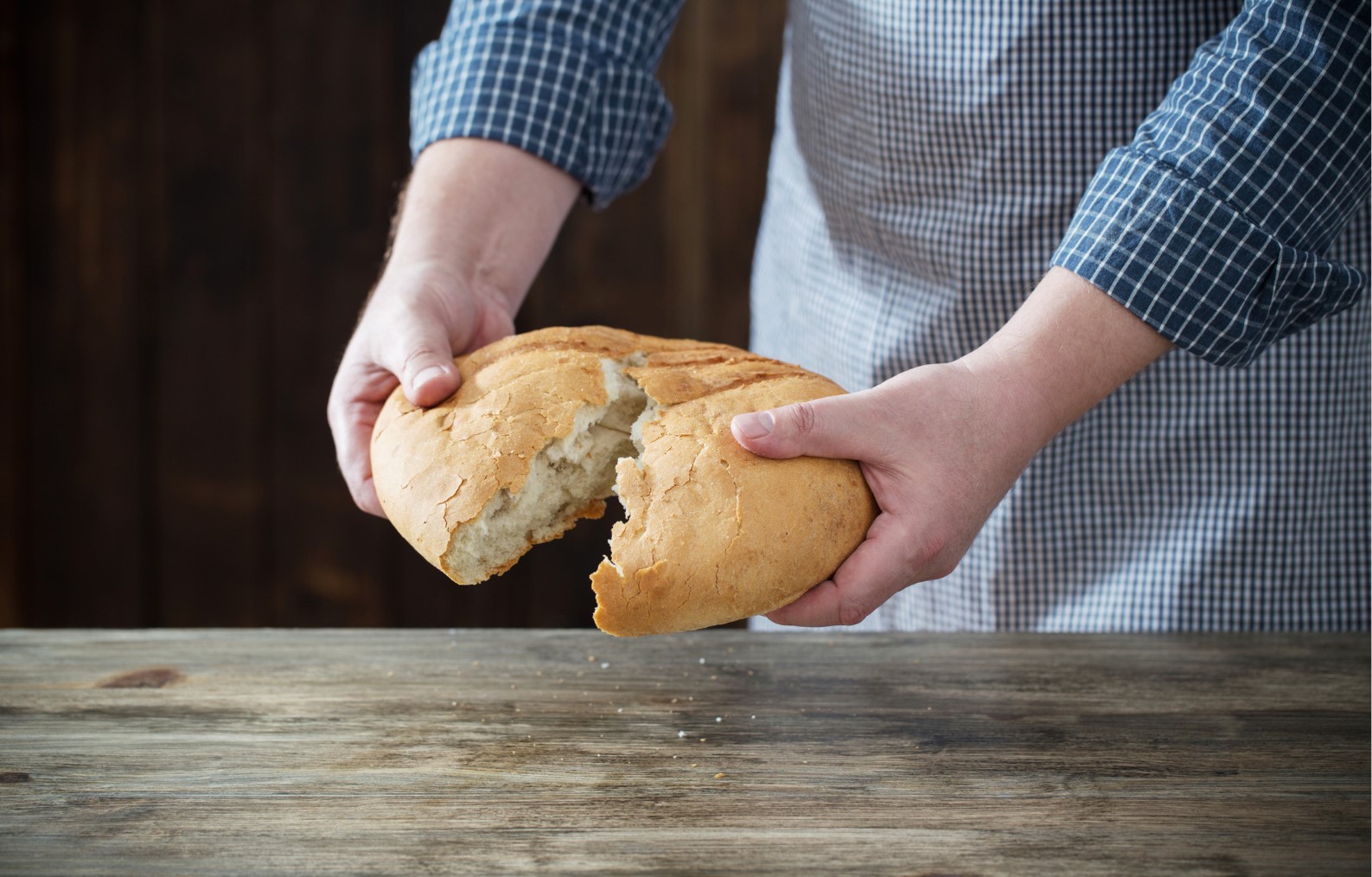One of the disadvantages of being a Christian in the 21st Century is that it can sometimes be hard to relate to events and practices in the New Testament.
The way we do things now may bear little similarity to the experience of the early church.
Communion (the Lord’s Supper) is a good example of this.
· The elements are probably different – it is a long time since we have used a fresh loaf of bread in my church
· The occasion is different – for many of us, we celebrate as part of a formal church service rather than with friends gathered around the table at home
Yet it is important we still do this.
So, let’s try to picture the celebration of bread and wine in a typical Christian home in a small rural community close to the East side of the Mediterranean Sea just a few years after Jesus’ death and resurrection.
Close your eyes and imagine being there.
The house is a rectangular structure made of mud bricks and roughly hewn blocks of stone with a wooden roof structure. All the cooking had been done earlier on an open fire pit just outside the main living area.
There is no electricity of course, but as it is nighttime, a few oil lamps are scattered around the room. A warm, smokey haze fills the space. A meal has been enjoyed together among family and friends. Conversation has been robust and honest, with love and a generous dose of humour.
Everyone is sitting or reclining around a low table. A small loaf, still warm from the hot, clay oven has been preserved for the final part of the meal. The head of the family, one of the church elders, rises to his feet and all eyes are on him. After praying a short blessing, he reminds them of the Lord’s directive to keep remembering His death until he returns.
The bread is broken in front of them, signifying the brutal destruction of the Lord’s body, forced to die by crucifixion. The leader announces, ‘Our Lord had said, “This is my body, which is given for you. Do this in remembrance of me.”’
As the loaf is passed around, each person pulls off a small portion and eats it. It reminds them of Jesus’ presence in their lives by His Spirit and it has not gone unnoticed that their brothers and sisters in Christ around the table eat the same loaf. As they make eye contact, it is clear: “we are on this faith journey together”.
Wine is then poured into a bronze or wooden cup, and they recall the images of Jesus’ blood tracking downwards from his hands and feet. Jesus had said, “This cup that is poured out for you is the new covenant in my blood.”
Our Lord was punished so that we might be forgiven. The cup is passed around, each person sipping from the same vessel, a symbol of their unity and commitment to each other.
Family. Community. Belonging. Remembering together.


